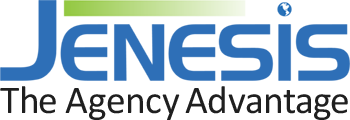
Significantly few insurance agencies in 2023 are still marketing their services without implementing SEO strategies. SEO content is instrumental in driving organic traffic to an agency’s website. From there, sales agents take over to turn visitors into qualified leads. It is a challenging process, but if your agency uses best practices, you can make conversions more manageable and efficient.
The following steps will help you understand why SEO matters to your insurance agency and how to convert traffic to usable leads.
Understanding Your SEO Traffic
The starting point of converting SEO traffic is understanding user behavior. You can use Google Analytics to observe what users do after landing on your website. These analytics provide insights into bounce rates, session duration, and how many pages a visitor clicks on per session.
You can also determine which keywords and landing pages drive the most traffic and conversions. This means that your agents can focus their efforts more effectively. For example, visitors who search for “car insurance quotes” and land on your website are looking to buy. Visitors who search for “how does car insurance work” want to find information. In either scenario, you can create and edit your website content to meet customer needs.
Crafting High-Converting Landing Pages
Your brand’s value proposition should highlight your agency’s unique insurance products. Use various content angles to compel users to learn more about your insurance coverage packages. Then, by using A/B testing for different designs, ad copy, and CTAs, you can ascertain which landing page elements perform best.
While you’re working on your landing page elements, don’t lose sight of your website optimization goals. Websites that load too slowly will lose visitors. And, if you don’t have a mobile-friendly version, you will lose more. All your landing pages must be accessible via smartphone to convert leads faster.
Engaging Content is Key
Your product content should include blogs, articles, and insurance guides. Focus on showing your expertise in the insurance arena while answering common questions and concerns.
If your content is dull, your visitor analytics will show it. Even though users click through from your social media pages, your website’s bounce rates will be high and session times very short. Along with engaging website elements, you must offer visual content to make complex insurance topics more interesting.
Consider uploading a FAQ section to each landing page. This will provide more information about your products before a sales agent takes over.
Clear and Convincing Calls to Action (CTAs)
One of the most critical factors in converting SEO traffic is convincing CTAs. There is no point in directing visitors to your website if there are no clear call-to-actions on your landing pages. Calls to action must be visible and placed in strategic positions. If they are easy to see and click on, conversion is more likely.
Try to avoid vague language like “click here for more”. Instead, use action verbs like “Get,” “Discover,” and “Start.” The word “start” is often used for online insurance applications and has proven highly effective in automatic conversions.
Once visitors act on the CTAs, your agents will then take over to convert the leads to sales. Check your analytics and perform A/B tests to see which CTAs work best. Testing and optimizing can help you find the perfect set of CTAs.
Building Trust with Testimonials and Reviews
Your website should not just be sales-focused, however. If every single landing page tries to sell something without offering any other information, you’ll lose visitors.
Reviews and testimonials play a massive role in the lead conversion process. Visitors may be interested in a particular product and then read a positive testimonial about the same product. This serves as motivation to buy.
Display testimonials and reviews prominently on your website. Align these reviews with the products on each page. You can also add a pop-up to your website encouraging existing customers to leave positive reviews.
It’s also crucial to address negative feedback instead of ignoring it. Acknowledge these reviews and offer solutions to show clients you care about their experience. Some agencies even feature negative reviews on their site, including the resolution. This helps show that they’re addressing issues openly to build trust.
Offering Lead Magnets
Another critical part of converting leads is offering lead magnets on landing pages. For example, if you want to build an email list to promote your products, you can use lead magnets to gather email addresses. Lead magnets include eBooks and free quotes that are accessible after a visitor enters their email address.
These offers should provide genuine value and not just be another sales tactic with no payoff. When lead magnets offer something of value, leads are ready for future sales pitches.
Also, the data collection process must never be intrusive. Don’t install a pop-up that can’t be closed or one that pops up every time another page opens.
Live Chat and Chatbots for Immediate Assistance
We live in a fast-paced world where customers expect immediate assistance. Install a live chat function or AI chatbot to assist website visitors with questions. Or employ a 24/7 live chat team to ensure no visitor query goes unattended. This availability helps ensure that your agents don’t miss out on any opportunity to convert leads and improves the effectiveness of lead nurturing efforts as well.
Conclusion
Consumers do everything online these days, and your agency must be able to keep up with this ongoing evolution. Converting SEO traffic into leads is crucial for your agency’s survival. And since SEO is continuously evolving as well, it’s important to make site optimization an ongoing effort.
If you want to refine your insurance agency’s SEO and conversion strategy but don’t know where to start, contact Jenesis today for a comprehensive SEO audit.
